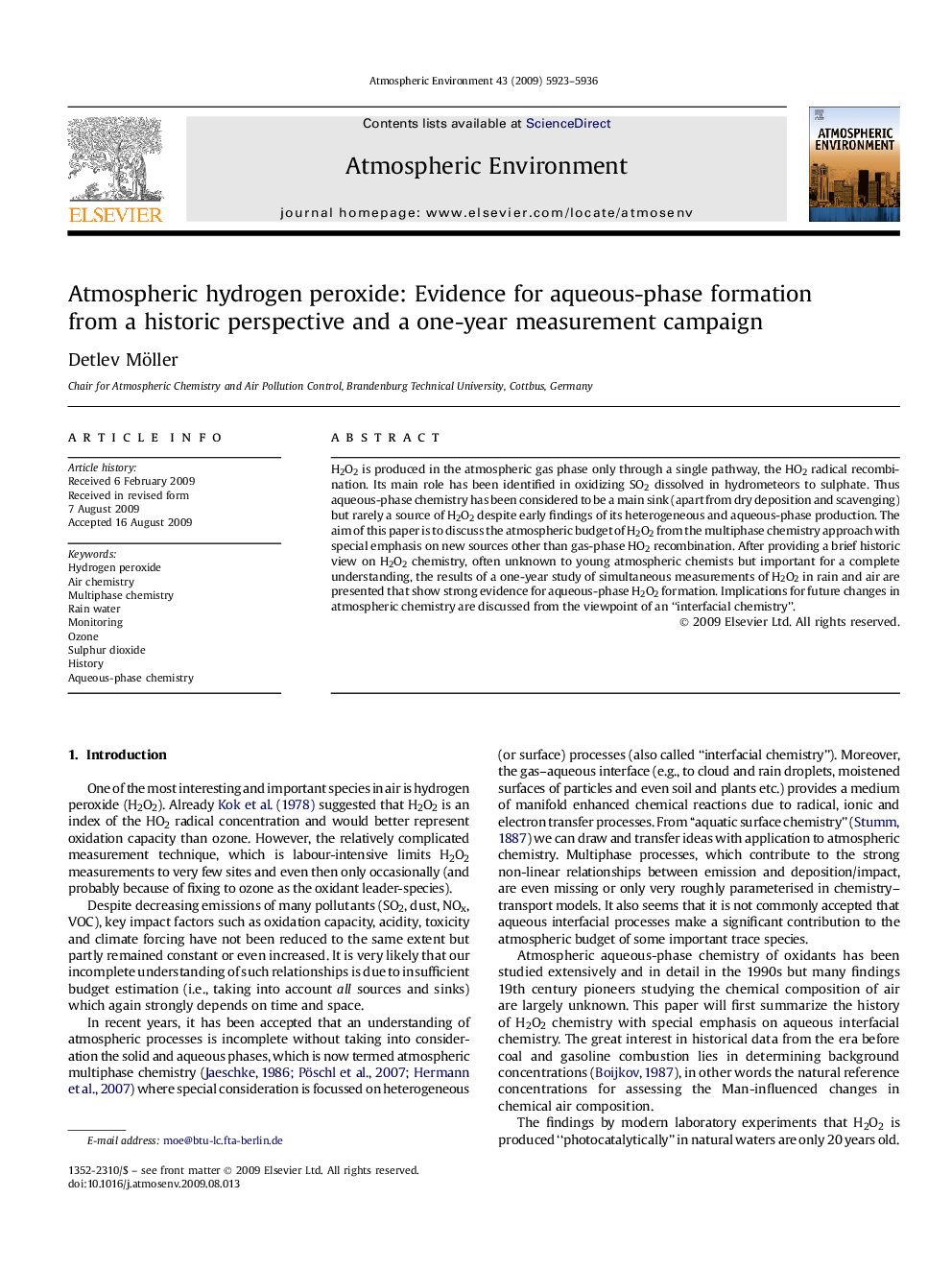| Article ID | Journal | Published Year | Pages | File Type |
|---|---|---|---|---|
| 4441437 | Atmospheric Environment | 2009 | 14 Pages |
H2O2 is produced in the atmospheric gas phase only through a single pathway, the HO2 radical recombination. Its main role has been identified in oxidizing SO2 dissolved in hydrometeors to sulphate. Thus aqueous-phase chemistry has been considered to be a main sink (apart from dry deposition and scavenging) but rarely a source of H2O2 despite early findings of its heterogeneous and aqueous-phase production. The aim of this paper is to discuss the atmospheric budget of H2O2 from the multiphase chemistry approach with special emphasis on new sources other than gas-phase HO2 recombination. After providing a brief historic view on H2O2 chemistry, often unknown to young atmospheric chemists but important for a complete understanding, the results of a one-year study of simultaneous measurements of H2O2 in rain and air are presented that show strong evidence for aqueous-phase H2O2 formation. Implications for future changes in atmospheric chemistry are discussed from the viewpoint of an “interfacial chemistry”.
